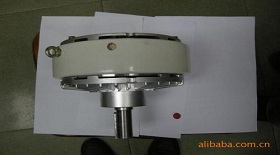Brake mechanism
According to the different installation positions on the vehicle, parking brake devices can be divided into two categories: central parking brake device and wheel parking brake device. The brake of the former is mounted on the transmission shaft, which is called the central brake. The latter shares a set of brakes with the traveling brake device, which has a simple and compact structure and has been widely used in cars.
The brake combines a disc brake as a driving brake and a drum brake as a parking brake. The outer disc of the double acting brake disc is used as the brake disc of the disc brake, and the middle drum is used as the brake drum of the drum brake.
When parking brake is carried out, the manual parking brake lever in the cab is pulled to the braking position, and the lower end of the parking brake lever is pulled forward by a series of levers and pulling ropes, so that it rotates around the flat head pin. The middle fulcrum pushes the brake push rod to the left and pushes the front brake shoe to the brake drum. When the front brake shoe pressure reaches the brake drum, the push rod stops moving, and the brake lever continues to rotate around the middle fulcrum. Then the upper end of the brake lever moves to the right, so that the rear brake shoe pressure is placed on the brake drum, and the parking brake is applied.
When the brake is released, the parking brake lever is pushed back to the non-braking position, the brake lever is rolled back under the action of the pull-rope return spring, and the two brake shoes are pulled together by the return spring of the brake shoes.
Transmission Exhibition will open. I am looking forward to your arrival.



